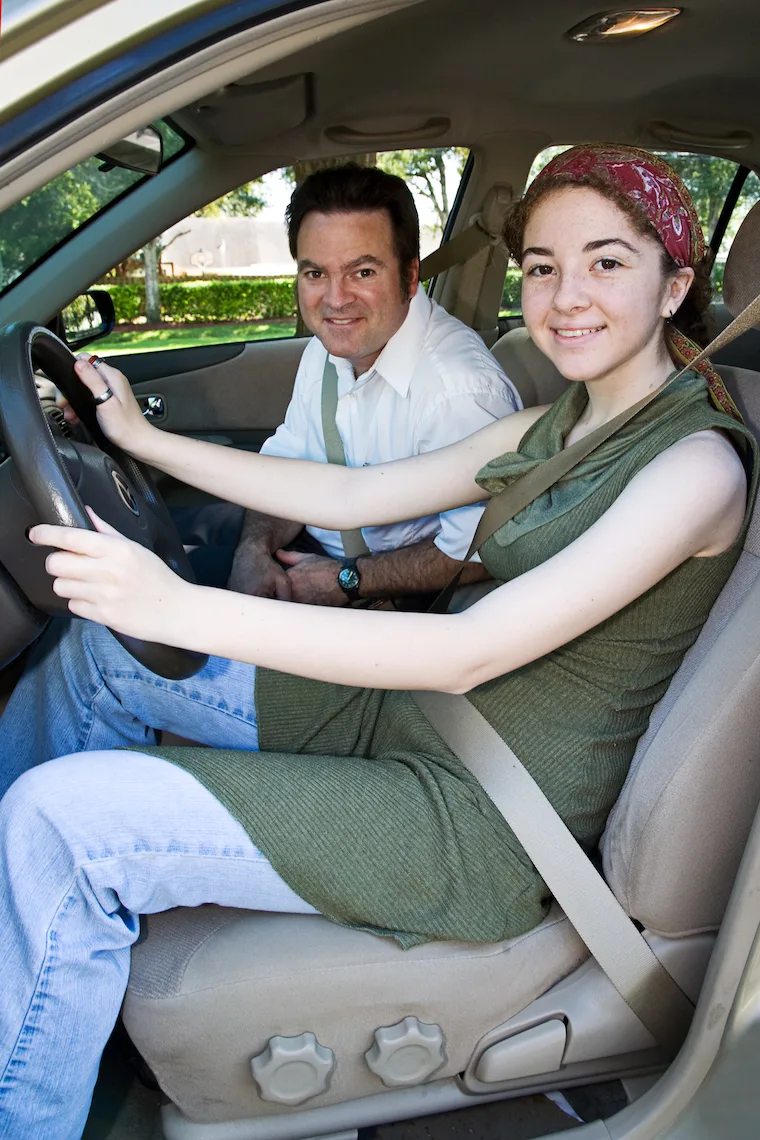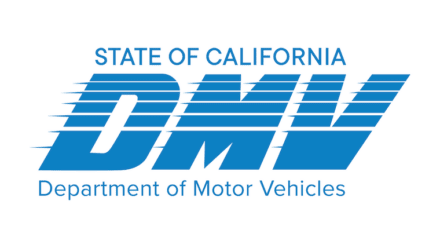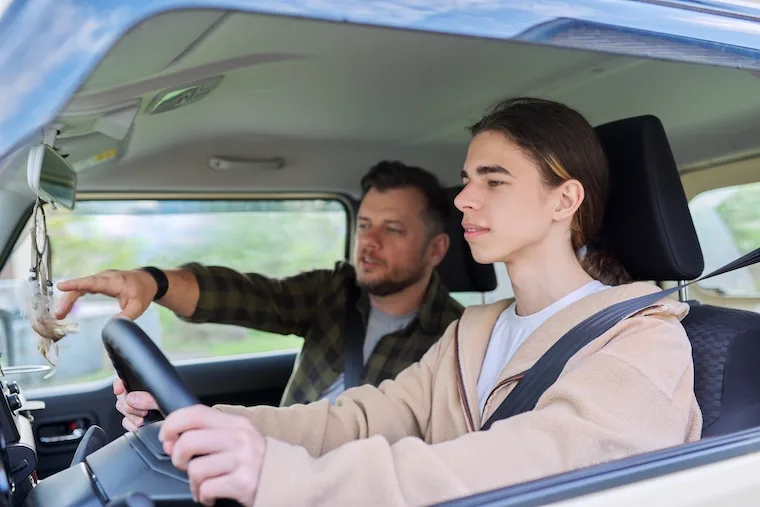Is it that time? That time you may be dreading but your teenager has been anxiously awaiting?
Time to apply for a driver’s permit. In California, a Driver’s Permit may also be known by other names such as a Learner’s Permit, Instruction Permit, and Provisional Instruction Permit. This permit is required for teens learning to drive and are working on fulfilling the requirements needed to earn their Driver’s License (DL).
But how do you get a driver’s permit in California? What are the steps you and your teen need to take to make the dream of a driver’s permit a reality?
And more importantly, what are some Insider Tips from parents who’ve already been through it? Keep scrolling!

Steps to Get a Driver’s Permit in California
NOTE: Information from this article comes from parents’ experience and the California DMV website.
For the purposes of this article, we are going to assume that all learners are under the age of 18. Here’s what you need to know:
1. Teenagers must be at least 15 1/2 years old, but under the age of 18.
Note that if your teen really wants to have their license when they turn 16, they’ll need to start the process as soon as they turn 15 1/2.
2. Complete a California Driver’s License or Identification (DL/ID) Card Application. The application can be found on the DMV’s website. Applications must be signed by parent(s) or legal guardian(s). Keep in mind, if parents share joint custody, both parents must sign the application. Applications may be accessed online.
3. By signing the application, parents/guardians are agreeing to accept financial responsibility (insurance) for the minor.
Minimum Insurance Requirements include:
$15,000 for injury or death of 1 person per accident.
$30,000 for injury or death of 2 or more persons per accident
$5,000 for any property damage per accident.
Proof of insurance must be carried in the vehicle at all times.
4. Applications must include the teenager’s full legal name as well as the social security number (SSN).
5. If the minor does not already have a California ID issued by the DMV, an original/certified copy of the teen’s birth certificate or a valid, unexpired United States Passport is also required. If the applicant is not a U.S.-born citizen, proof of legal U.S. residency is required.
6. Applicants who are 15 1/2 – 17 1/2 years old, will need to provide proof of a complete driver eduction program or are enrolled and participating in an approved integrated driver education/driver training (DE/DT) program.

Related: Driver Training Courses in Los Angeles
7. Applicants will be required to pass a vision exam and provide a thumbprint.
8. Pay a non-refundable application fee.
9. Pass the knowledge test. A minimum passing score requires 38 correct answers out of a total possible 46. Applicants will have 3 chances to take the test; however, if you don’t pass, you must wait 7 days before taking the test again. If you are unable to pass all 3 times, applicants must start over by filling out a new application and paying the fees. Applicants are encouraged to study the handbook and take advantage of the practice tests.
10. Upon meeting all these requirements, teens will be issued a Provisional Instruction Permit which also must be signed by a licensed driver or authorized driving instructor. Teens may then practice driving with a parent/guardian, or adult 25 or older, who has a valid California Drivers License. This licensed passenger is required to sit in the front seat so that they can take control of the car at any time if needed. The Permit does not allow teens to drive alone at any time.
11. Remember to make an appointment at a DMV office for faster service.
Insider Tips from Parents Whose Teens Have Learned to Drive
Let them practice a lot.
Let them drive everywhere, all the time. You should get used to being a passenger, and only drive when they’re too tired to be safe.
Be your best self as a teacher.
If you find you’re a nervous passenger while they’re learning how to drive, enlist someone else who can be calmer to take turns with you – maybe your partner, or an Aunt, or a family friend. Or just step up and be a good, calm teacher. Use your patient tone of voice, breathe deeply, and be helpful.
Parents, you need practice as a driving instructor first.
Ride in the passenger seat with a licensed driver and pay attention as if you were with your kid who has a permit. Things may seem very different to you there, and it will give you perspective on the situation with your teen. For example, it may seem like you are further to the right than you are.
Have them practice the most common routes over and over.
If they will be driving to school, for example, drive there a lot, even over Summer break. Bonus: this tip works even before your teen gets their permit, because you can be driving and pointing out the route to them. Even as passengers they can be learning good skills. For example, talk about when and why you’re merging or changing lanes (not to mention the how), as well as when to turn on your turn signal, or how you make a left turn.
Teach them the most accident-prone areas to avoid.
Here in SoCal, there’s no shortage of high-traffic intersections, and it’s not a bad idea to stay away from them if you can help it. Every major personal injury law firm keeps a list of the roads where the most accidents occur, so it’s easy to find out where to avoid.

Text Before and After, but never During.
Most of us will want to know when our kids are on the road, and establishing a family policy of texting Mom or Dad before they leave and once they arrive someplace is a great idea. Of course, they need to also be told, in no uncertain terms, that texting while driving is not allowed. It’s against the law for a very good reason: it’s not safe.
Remind them speeding is against the law.
In this case, the point is – even if they were due home or to school at a certain time, it’s better for them to be late than to rush or drive recklessly to get there.
Get out of the City.
If you can, take your teen out to a less populated area to practice driving. Maybe you can combine it with a road trip you’re taking as a family, like when you head to the mountains or the desert. Once there, find some quiet roads and let them drive.
Related: See our favorite places to practice driving here in LA.
Teach them car care basics.
We know that doesn’t sound like a driving tip, but trust us: anyone who drives a car needs to know a few basics about how they work – at the very least. Teach them how to spot if the tires are low on air, or what each of the indicator lights mean.
Get them their own wheels.
If you can afford it, get your teen a car of their own. That way, they’ll practice in a car that they’ll actually be driving. Plus they’ll learn what it’s like to be in charge of their own wheels.
It may seem scarier, but practice driving during Rush Hour.
Why? Because everyone’s driving slower then.

Know what to do when there’s an accident.
Living and driving in Southern California, we have to face the fact that car accidents are inevitable. Here’s what to do, whether it’s a minor fender-bender or a bigger accident.
- Pull over to a safe spot and stop, because driving away is not OK.
- Call the police or 911, especially if you know (or suspect) that anyone was hurt.
- Take photos of the car (or cars) involved, including getting the license plates, and any damage.
- Gather information from the other party, including exchanging names, insurance, license info, registration info, and contact info.
- Seek medical care if necessary
We hope these tips are helpful when it’s time to teach your teen to drive.
Related: Things to do with Teens in Los Angeles
MomsLA is your source for Things to do with Kids in Los Angeles
Wendy Kennar is a mother, writer, and former teacher who has lived her entire life in the same Los Angeles zip code. You can read more from Wendy at her website WendyKennar.com where she writes about books, boys, and bodies (living with an invisible disability).


